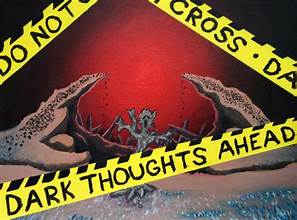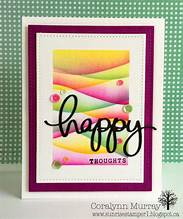
Many of us have a running commentary in our heads about what we’re doing or what’s happening to us. There usually aren’t full sentences, but rather fragments or expletives or moans or groans or cheers. At times we’ll be muttering our complaints about how we’ve been treated or how we could have done better in a given situation. If we weren’t doing this, we could be simply being and experiencing instead of judging and grading and resisting. Some of us may be sailing through with a rosy outlook and gratitude for whatever comes our way. Blessed be the undisturbed, for they will know The Way. I believe, however, a lot of us are making ourselves miserable, to one degree or another, with internally narrating our lives in a negative way. Whether or not this applies to you, I invite you to read on. I will share some insights on the human inclination to do play-by-play on the game of life.
What is This Tendency?
For many centuries, philosophers have made mention of people talking to themselves. It may be silent or aloud, but we have been addressing ourselves for probably as long as we’ve had brains to convey the exchange. It was only in the late 20th century that psychologists began formally theorizing it.
An article written in Frontiers in Psychology in 2020 and published on the National Library of Medicine website “explores the relationships among different types of internal dialogues and self-talk functions.” The writers of the paper lump internal dialogue and self-talk under the broader term “intrapersonal communication.” There are other modes of intrapersonal communication, but for our purposes I’m going to focus on the above two modes.
The article cites a study that says self-talk is a self-regulatory tool used by all of us at times. We use it to calm ourselves with such phrases as “Don’t worry” or “You can get through this.” A different context might call for something like “Ah-h, the finish line!” With self-talk, the sender and the receiver are usually assumed to be the same person. The message can be one word, sound, command or such without an answer or extended conversation. It’s essentially an internal monologue.
With internal dialogue, the communication becomes more complex. There may be multiple parties with multiple voices exchanging statements, all within one mind. The primary way it’s used is to help a person work out how to handle new or strange experiences. Have you ever had a conversation that went disturbingly wrong and you ran through it over and over again, maybe revising it to have you saying something much more sensible or courageous?
I tend to think internal monologues or dialogues are habit-forming and we can come to depend on them. I believe the same is true of self-talk. My wife and I find it amusing that we punctuate the completion of tasks large and small with a quiet “Okay” as we walk around the house.
Psychologists view these mental exchanges as a natural phenomenon. Some experience them more than others and supposedly some don’t experience them at all. In most cases, this phenomenon need not be a cause for worry.
When it’s Not So Good

The mental health professionals tell us when our voices go unusually negative, it’s time to seek help. Specifically, when we’re having thoughts of harming ourselves or others, we may be losing control and need to rein in the mind.
While I take that advice very seriously, I wish to turn our attention to a lesser problem that we may not see as a problem at all. I’m referring to the everyday narrative hounding us constantly, which tells us the unsatisfactory state of our world. It’s an insidious element of our minds, steering us to the negative as it slyly pretends we’re perfectly fine thinking that way.
I have long looked upon myself as a positive person with a relatively cheery outlook. I’m known to be sarcastic sometimes, but even then I usually try to lace my comments with a non-caustic thread of humor. Only in the last couple of years have I started to see my glasses aren’t as rose-colored as I thought they were.
As a part of an intensified yoga practice, I spend a little time each day in introspection. I examine how I behave and where my thoughts go. I’ve noticed more than a few negative behaviors, among them being my reactions to what happens in everyday life. Over the two years plus, I’ve seen how I generate my own misery in my reactions. Here are some examples of mine that you (a good, seemingly positive person) may notice in yourself. A few minutes ago, I picked up a folder of papers from my desk and dropped some of the contents on the floor. I cursed, as though that was a really big deal. I could be watering plants when the hose kinks. I might sigh in annoyance and walk back to the spot of the kink with agitation. I’m driving to an appointment, running a little behind, and groan when a green light turns red. When my novel Boundless Trust was published, I realized I misspelled a word in the last sentence of the book. I had a talk with myself internally about that, wondering how I could have made that mistake. I still cringe with embarrassment when I think about it.
Being in the Moment
We don’t need the self-judgment, the negation or the commentary at all. It’s all ego, yakking at us through our brains. I believe we are here first and foremost to simply be. Without our baggage, we are unencumbered by thoughts and matter. But, hey, thinking is a tough habit to break. If you have to think, then choose to be cheerful and forgiving. As you make your way through your day, accept who you are and what happens. You’ll be a lot happier if you do.

Leave a Reply